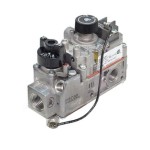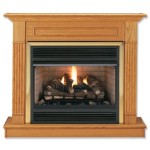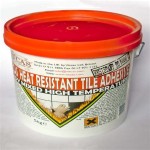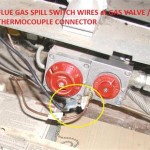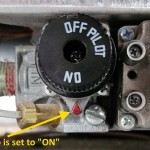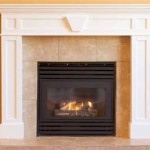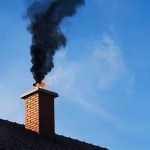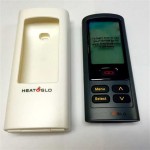Contemporary No Vent Fireplaces: A Modern Heating Solution
No vent fireplaces, also known as ventless or vent-free fireplaces, have gained significant popularity in contemporary interior design and home heating due to their aesthetic appeal, ease of installation, and operational flexibility. Unlike traditional wood-burning or gas fireplaces that require chimneys or vents for exhausting combustion byproducts, no vent fireplaces operate without these structural necessities. This characteristic makes them an attractive option for homes where installing a conventional fireplace is either impractical or cost-prohibitive. These fireplaces represent a technological advancement in heating, offering a blend of functionality and modern design.
The absence of a venting system simplifies the installation process considerably. No vent fireplaces can be placed against virtually any wall, offering homeowners greater freedom in designing their living spaces. This adaptability particularly appeals to individuals residing in apartments, condominiums, or homes where structural modifications are undesirable. Furthermore, the lack of a chimney or vent translates to increased energy efficiency. Because heat is not lost through a flue, no vent fireplaces can convert nearly 100% of the fuel's energy into heat, making them a more efficient heating source in comparison to their vented counterparts. This efficiency can result in lower heating bills and a reduced environmental impact.
Contemporary no vent fireplaces come in a diverse range of styles, from traditional designs that mimic the look of wood-burning fireplaces to sleek, modern units that complement minimalist interiors. Fuel options include natural gas, propane, and ethanol, each offering different advantages in terms of cost, convenience, and environmental impact. Regardless of the fuel type or design aesthetic, all no vent fireplaces share the common characteristic of being designed to burn cleanly and efficiently, ensuring a safe and comfortable indoor environment.
Safety Considerations and Operational Guidelines
Safety is paramount when considering the use of no vent fireplaces. These appliances are designed with multiple safety features to mitigate potential risks associated with incomplete combustion and carbon monoxide buildup. Oxygen Depletion Sensors (ODS) are standard components in most no vent fireplaces. These sensors monitor the oxygen levels in the room and automatically shut off the fireplace if the oxygen concentration drops below a safe threshold. This safeguard prevents the buildup of carbon monoxide, an odorless and deadly gas.
It is crucial to select a no vent fireplace that is certified by a recognized testing laboratory, such as the American Gas Association (AGA) or Underwriters Laboratories (UL). These certifications indicate that the fireplace has been tested and meets stringent safety standards. The manufacturer’s instructions and local building codes should be strictly followed during installation and operation. Proper ventilation is also essential. While no vent fireplaces do not require a dedicated vent, adequate airflow within the room is necessary to ensure sufficient oxygen supply and prevent the accumulation of combustion byproducts.
The size of the room in which the fireplace is installed must be appropriate for the fireplace's heat output. Installing an oversized fireplace in a small room can lead to overheating and discomfort. Regularly inspect and maintain the fireplace according to the manufacturer's instructions. This includes cleaning the burner and inspecting the ODS to ensure it is functioning correctly. Carbon monoxide detectors should be installed in the home, especially near sleeping areas, to provide an additional layer of safety. These detectors will alert occupants to the presence of carbon monoxide, allowing them to evacuate the premises and seek medical attention if necessary.
Fuel Options and Environmental Impact
The choice of fuel for a no vent fireplace significantly impacts its cost, convenience, and environmental footprint. Natural gas is a common fuel option, especially in areas where natural gas lines are readily available. Natural gas burns relatively cleanly and is often more affordable than other fuel options. Propane is another popular choice, particularly in areas where natural gas is not accessible. Propane is a portable fuel that can be stored in tanks, making it suitable for homes in rural areas. However, propane typically costs more than natural gas.
Ethanol is an increasingly popular fuel option for no vent fireplaces. Ethanol is a renewable fuel derived from plant-based sources, such as corn or sugarcane. Ethanol fireplaces produce minimal emissions and are considered to be a more environmentally friendly alternative to natural gas or propane. However, ethanol fuel can be more expensive than other options. The environmental impact of no vent fireplaces is a subject of ongoing debate. While these fireplaces do not require vents, they still produce some combustion byproducts, including carbon dioxide, water vapor, and small amounts of nitrogen oxides. The amount of these emissions varies depending on the fuel type and the efficiency of the fireplace.
Compared to traditional wood-burning fireplaces, no vent fireplaces generally produce significantly fewer emissions. Wood-burning fireplaces release particulate matter, carbon monoxide, and other pollutants into the atmosphere, contributing to air pollution. No vent fireplaces, especially those fueled by natural gas or ethanol, produce significantly fewer of these pollutants. However, it is essential to consider the overall environmental impact of each fuel option, including the extraction, processing, and transportation of the fuel. Ethanol, while considered renewable, can have localized environmental impacts depending on the agricultural practices used to produce the feedstock.
Design Aesthetics and Installation Considerations
Contemporary no vent fireplaces offer a wide range of design options to complement various interior styles. These fireplaces are available in different configurations, including wall-mounted units, freestanding models, and inserts that can be placed within existing fireplace openings. The aesthetic appeal of no vent fireplaces is enhanced by the use of realistic-looking artificial logs, decorative glass beads, or other embellishments. The flame patterns can also be adjusted to create different visual effects, ranging from a gentle flicker to a roaring blaze.
Wall-mounted no vent fireplaces are a popular choice for modern homes. These units are sleek and space-saving, making them ideal for smaller rooms or apartments. Freestanding no vent fireplaces offer greater flexibility in terms of placement, as they can be moved from one room to another. Fireplace inserts are designed to fit into existing fireplace openings, providing a convenient way to upgrade an old, inefficient fireplace with a modern, ventless unit. The installation of a no vent fireplace is relatively straightforward, but it is essential to follow the manufacturer's instructions carefully.
For gas or propane-fueled fireplaces, it is necessary to connect the appliance to a gas line or propane tank. This task should be performed by a qualified professional to ensure safety and compliance with local building codes. Ethanol fireplaces do not require a gas line or propane tank, making them easier to install. However, it is essential to store ethanol fuel safely and handle it with care. Before installing a no vent fireplace, it is advisable to consult with a building inspector or a qualified HVAC technician to ensure that the installation meets all applicable codes and regulations. This will help to avoid potential problems and ensure the safe and efficient operation of the fireplace.

Ventless Gas Fireplace Vent Free Modern

Ventless Gas Fireplace Vent Free Modern

Vent Free Archives SÓlas Contemporary Fireplaces
:max_bytes(150000):strip_icc()/ventless-gas-fireplaces-4160746-hero-f9d4bdcd9bd446eb84406de306f790ba.jpg?strip=all)
How To Pick Out A Ventless Gas Fireplace

Artisan 60 Inch Vent Free Linear Fireplace Fine S Gas

What Is A Ventless Gas Fireplace Experts In Gaithersbutg Md

Modern And Linear Fireplaces The Fireplace Company Inc

Monessen 48 Artisan Vent Free Fireplace Avfl48nip Avfl48pip Us

Gas Fireplaces A Modern Alternative

Gas Fireplaces A Modern Alternative
Related Posts

